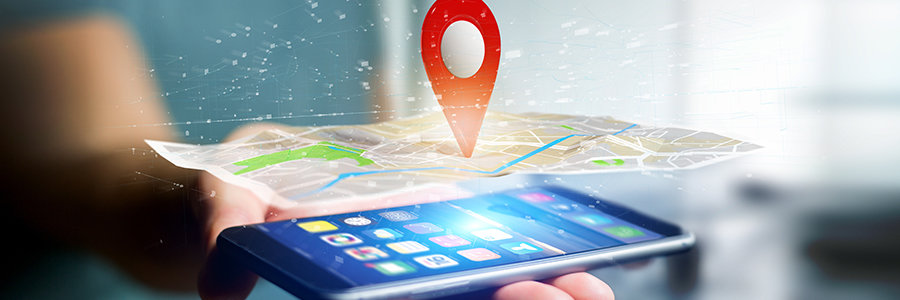
Geoconquesting: What Is It And When Is It A Bad Marketing Strategy?
Getting customers from your competitors is one of the most important marketing strategies a brand should embrace. To date, the efforts employed are fairly broad and difficult to measure. But with the universal appeal of native brand apps on our smartphones, getting a significant percentage of those customers to come back to your business is actually pretty easy.
However, the execution of that strategy is not the same for every company. The mistake many brands make is believing this is a one-size-fits-all approach. It is definitely not — particularly when it comes to the use of location data. But that problem is easily solved when you use location data properly and combine it with a behavior-based approach to your marketing.
One of the most commonly used tactics in getting customers from a competitor is geoconquesting. The idea behind geoconquesting is fairly simple. Basically, if you set up a geofence around a competitor’s place of business, you have the opportunity to send customers an ad or push notification once the geofence has been entered.
I typically don’t recommend geoconquesting for advertising efforts. It often comes off as creepy. The reason being is that if someone has broken a geofence and they decided to go online to search for something, their behavior is most likely focused on something other than what your product or service offerings are all about. Your ad can be intrusive.
That said, push notifications via your native branded app are far more effective because of their relevancy. This is because the customer is performing a behavior similar to what your business offers. You’re simply giving them an opportunity to get a better deal.
Behaviorally speaking, this method is very effective because the customer’s current motivation is already in line with your product offering. We know this to be true because of their location data and because they have explicitly told you they enjoy your brand by the mere fact they’ve downloaded your app onto their smartphone. Messaging done this way is non-intrusive and relevant. Plus, it can be behaviorally personalized in a way that never uses their personal information.
However, geoconquesting doesn’t make sense for every business. When you examine a geoconquesting behavior, three things have to happen in order for a customer to convert: The customer has to have a sufficient amount of motivation, they need to be prompted at the right time, and they need to have the ability to make the behavior change.
Time is a critical component of behavioral analysis.
The first two are pretty easy. They’re already performing a familiar behavior since they are at a competitor’s location. So, motivation to use that product or service is obviously high. Second, you’re prompting them with a message featuring a better offer because they entered a competitor’s geofence. However, examining someone’s ability to change behavior at that moment is the critical mistake many companies make. This is because many companies don’t account for the factors that can affect someone’s ability to perform a behavior. When it comes to geoconquesting, time is the most critical of these.
A casino campaign example can easily demonstrate this point. If someone has your casino’s app on their phone, they clearly have a loyalty to your casino and might play there often but not every time. A player will most likely visit a competitor’s casino many times during the course of a year. The objective is to recapture as many of those competitor visits as possible.
To do that, you set up a geofence around your competitor. Next, you layer in some behavior variables: frequency of visits to your casino, time elapsed since their last visit, types of games played, etc. The reason this is important is to ensure your push notifications aren’t willy-nilly. You need them to be relevant and timely. The messaging has to demonstrate respect for a player’s interests and an understanding of their behaviors.
When a player enters the geofence and those parameters are met, a push notification can be sent which offers them, say, $25 in slot play if they come to your casino instead within the next two hours. We have discovered that this type of behavior-based push notification can realize conversion rates between 18% and 25%. The reason this is so effective is that casino patrons have the time to play. It’s entertainment for them. The recapture of even a small percentage of visits can add up to a significant amount of additional revenue.
Not all geoconquesting campaigns will work.
Let’s look at an example where geoconquesting is less likely to work: the carwash business. In this case, a carwash brand wants to engage in a geoconquesting campaign to get new and existing customers from a competitor. So, they set up a geofence that, when entered, delivers an ad or push notification for a great deal if that customer comes to their place of business instead.
This kind of campaign will likely fail because, when it comes to someone’s ability to change a current behavior, time is a barrier that a carwash company likely can’t overcome. The reason being we get our car washed between the raindrops, figuratively speaking. In other words, we don’t make an appointment — we do it when it is convenient (e.g., while running errands or over lunch). Time, in this case, actually decreases a person’s motivation to perform this behavior.
So, for your geoconquesting campaign to be successful, you have to examine if people actually have the time to perform the behavior you’re requesting. This simple behavioral analysis can save you a lot of wasted effort and money.
This content was originally posted as an article on Forbes.com on 9/27/21.
You may also be interested in
How the Right AI Can Expand the Casino Player Experience
Most casinos aren’t fully embracing AI, and, in turn, they’re missing opportunities to take care of their existing players and outpace their competition. Unrealized potential awaits—from enjoying the benefits of a true attribution channel to delighting players with...
How to Use AI Behavioral Data to Inform All Your Marketing Initiatives
Everyone has had a validating experience with a product where it feels like a brand just gets them. To the customer, it feels like a match made in heaven. They may love the features of a certain product, but when asked what they like most about it, it’s not convenient...
Most Mobile Apps Don’t Make Money. Here’s Why.
Most brands believe their mobile app is making them money, when in reality, it probably is not. After all, when customers use a brand’s mobile app to complete a transaction, it doesn’t necessarily mean the mobile app is responsible for the transaction. It’s the...
Leveraging Artificial Intelligence (AI) to Uncover Sales Opportunities
Businesses are constantly on the lookout for innovative ways to maximize their revenue. Two of the most powerful sales techniques are cross-selling and upselling. Both strategies involve offering additional products or services to a customer during the sales process,...





